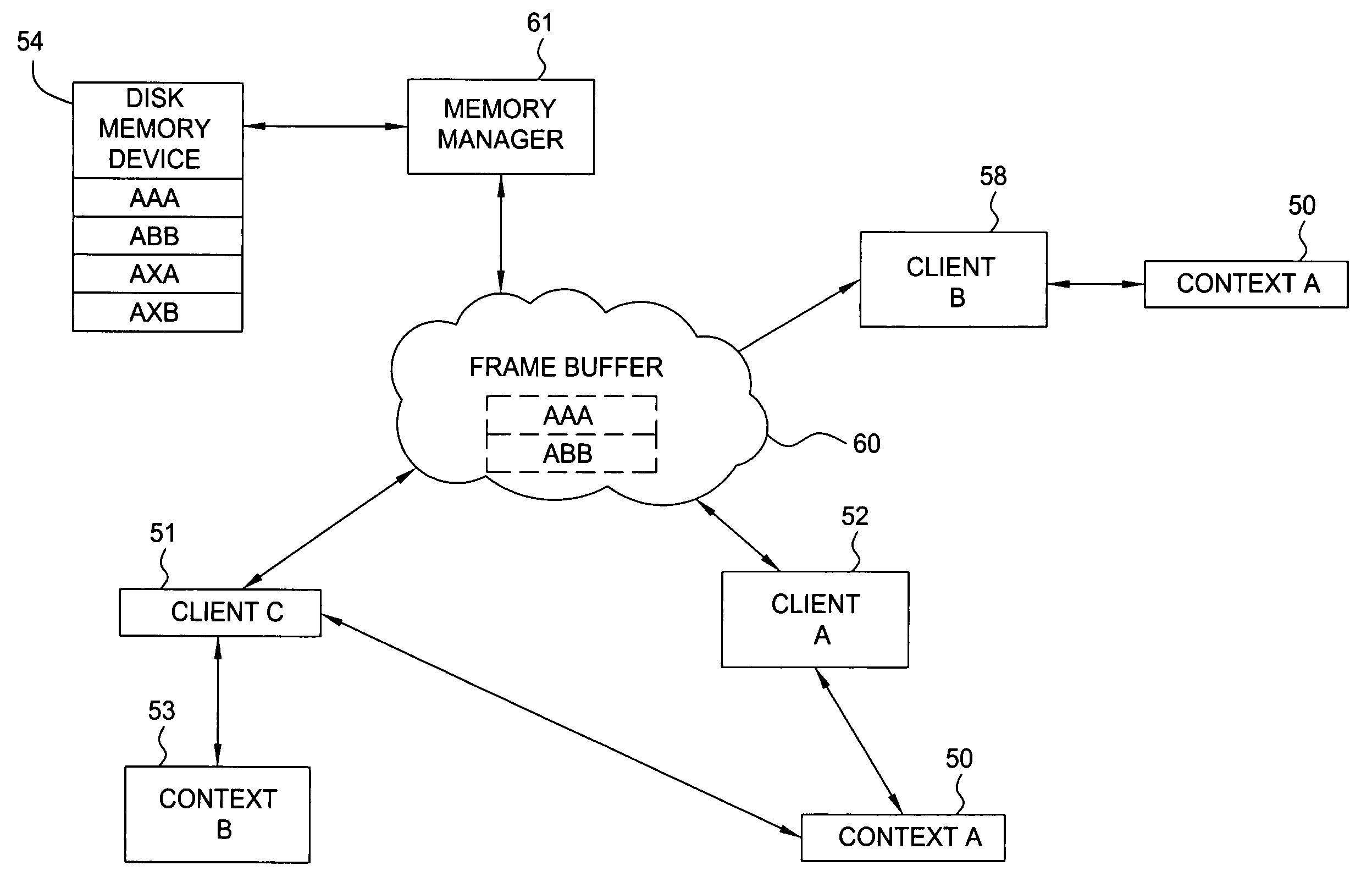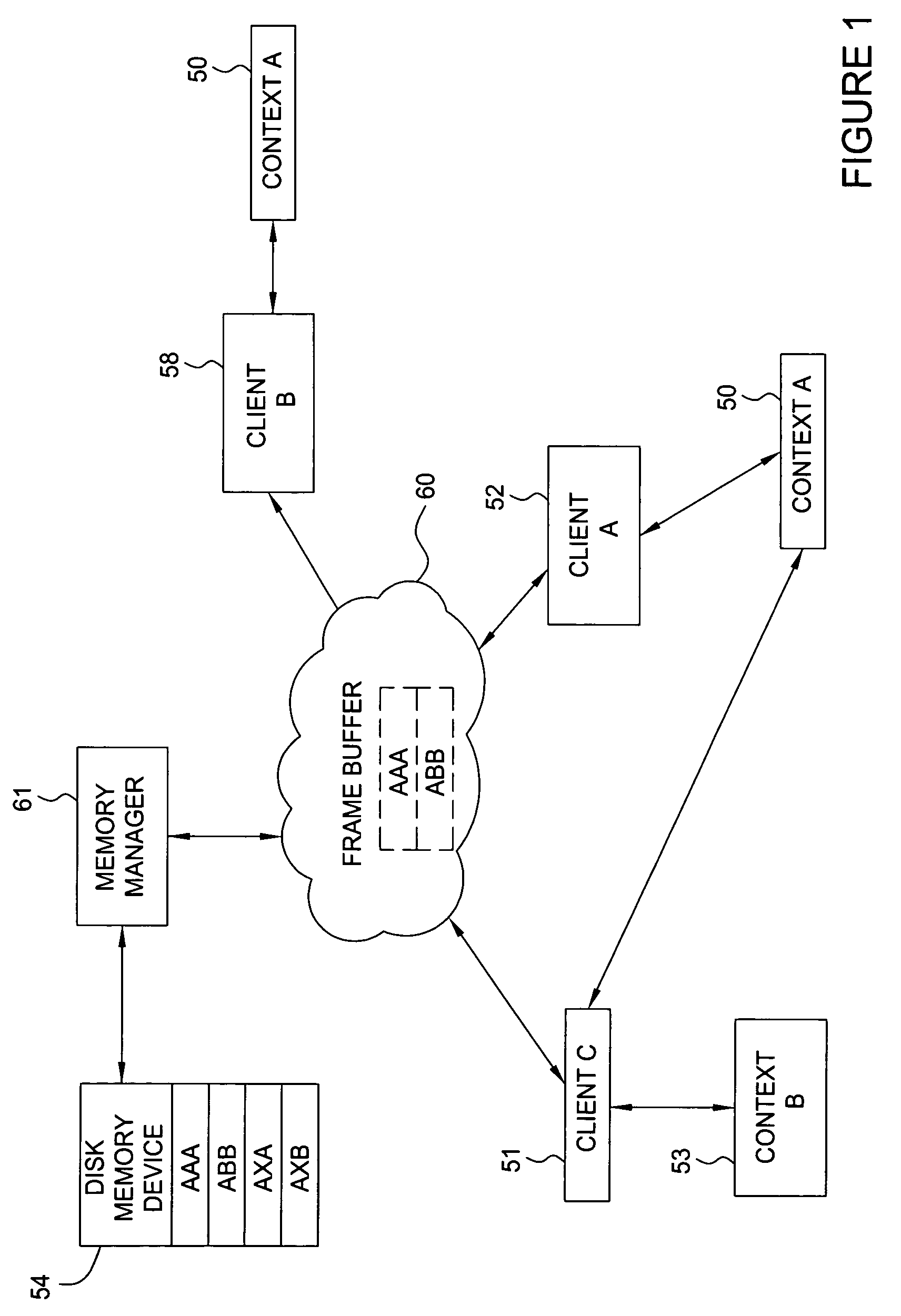Memory management system having a forward progress bit
a memory management system and forward progress technology, applied in the field of memory management systems, can solve the problems of disk memory being slow when compared to dram, dram is also relatively expensive, and expense tends to limit the amount of dram available,
- Summary
- Abstract
- Description
- Claims
- Application Information
AI Technical Summary
Benefits of technology
Problems solved by technology
Method used
Image
Examples
Embodiment Construction
[0026]The principles of the present invention provide for methods and systems that address problems related to managing virtual memory in computer systems that have GPUs composed of multiple memory clients (thereafter, just “clients”). FIG. 1 is useful for illustrating the problems address by the present invention. In multiple client systems, to avoid wasting time by idling the GPU during the relatively slow disk transfers of a page swap from a disk memory into a frame buffer, if a context A 50 (a program or program segment being performed) is being processed by clients A 52 and B 56, and if client A encounters a page fault accessing virtual page AAA, which is in disk memory 54, the GPU (not shown) automatically performs a context switch to allow context A 50 to be run by client B 58 (or client C 51 to run context B 53, etc) while the faulted page gets swapped from disk memory 54 to a frame buffer memory 60 by a memory manager 61. After page AAA is resident in the frame buffer memor...
PUM
 Login to View More
Login to View More Abstract
Description
Claims
Application Information
 Login to View More
Login to View More - R&D
- Intellectual Property
- Life Sciences
- Materials
- Tech Scout
- Unparalleled Data Quality
- Higher Quality Content
- 60% Fewer Hallucinations
Browse by: Latest US Patents, China's latest patents, Technical Efficacy Thesaurus, Application Domain, Technology Topic, Popular Technical Reports.
© 2025 PatSnap. All rights reserved.Legal|Privacy policy|Modern Slavery Act Transparency Statement|Sitemap|About US| Contact US: help@patsnap.com



